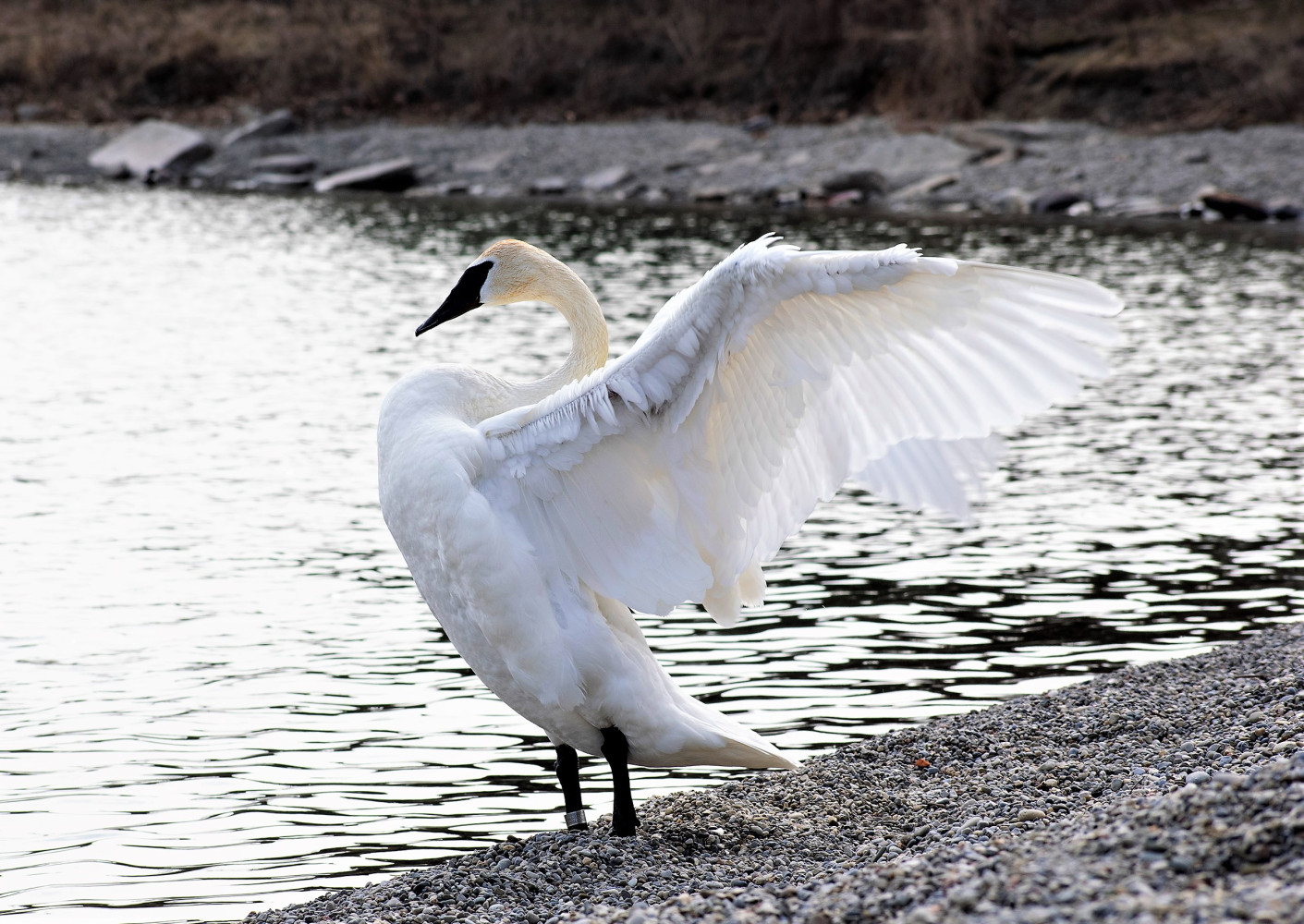
'Worst we have seen in North America': Avian Flu across GTA has experts concerned
“This is the worst we have seen in Canada and in North America.” That’s how Dr. Shayan Sharif, a veterinary pathologist, describes the current third wave of avian flu devastating wild and domestic bird populations across the Western Hemisphere.
Millions of animals are dying in Canada as rising confirmed cases of a more transmissible strain of Avian Influenza, also known as bird flu, have been reported in wild birds across the world. Not only does this zoonotic virus kill birds, but there is a high risk to mammals, too. Thousands have been reported dead across the country with 40 different species impacted in the last year.
Now that the migratory birds are coming back for spring, the outbreaks are rising once again.
At one pond in Caledon, 60-100 birds were reported deceased on March 17 which triggered the closure of access to the wetland by Town officials to protect residents as the risk of transmission to mammals increases. Across the Americas skunks, raccoons, coyotes, foxes, seals, sea lions, and a pet dog in Oshawa—the first case of its kind—have all reportedly died this year from coming into contact with infected birds or their fluids. The same risk threatens any animal that lives among or preys on birds, or scavenges carcasses, as a part of their natural behaviour.
Though transmission rates among animals with bird interactions are concerning, the current risk to humans remains relatively low except for those working in commercial farming.
The City of Brampton first reported deceased waterfowl on March 20, and ten days later the Town of Caledon officially released its statement after testing done by the Canadian Wildlife Health Cooperative (CWHC) for the dead geese came back positive for Highly Pathogenic Avian Influenza (HPAI) strain H5N1.
Anyone who encounters a sick or dead bird or other animal within the Greater Golden Horseshoe should call both 311 and the Ontario Regional Centre of the Canadian Wildlife Health Cooperative at 1-866-673-4781.
On April 4, after more and more reports around the GTHA of dead birds, the City of Mississauga notified residents of the risks too.
HPAI infections in wild birds can show symptoms similar to what humans experience during the flu—lethargy, aches, trouble breathing, inability to keep food down, risk of further illness due to a compromised immune system—all leaving the sick animals at even higher risk of being predated.
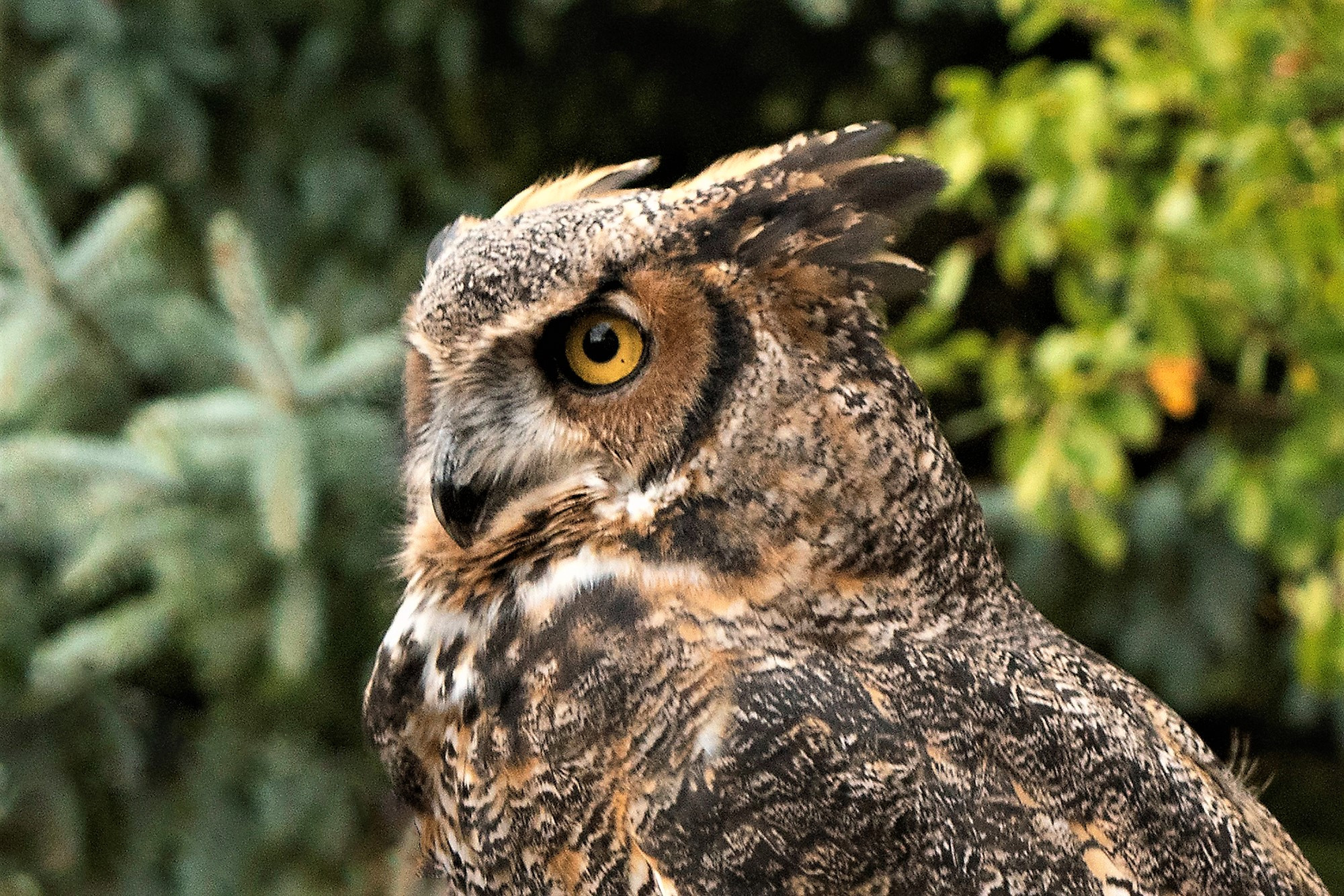
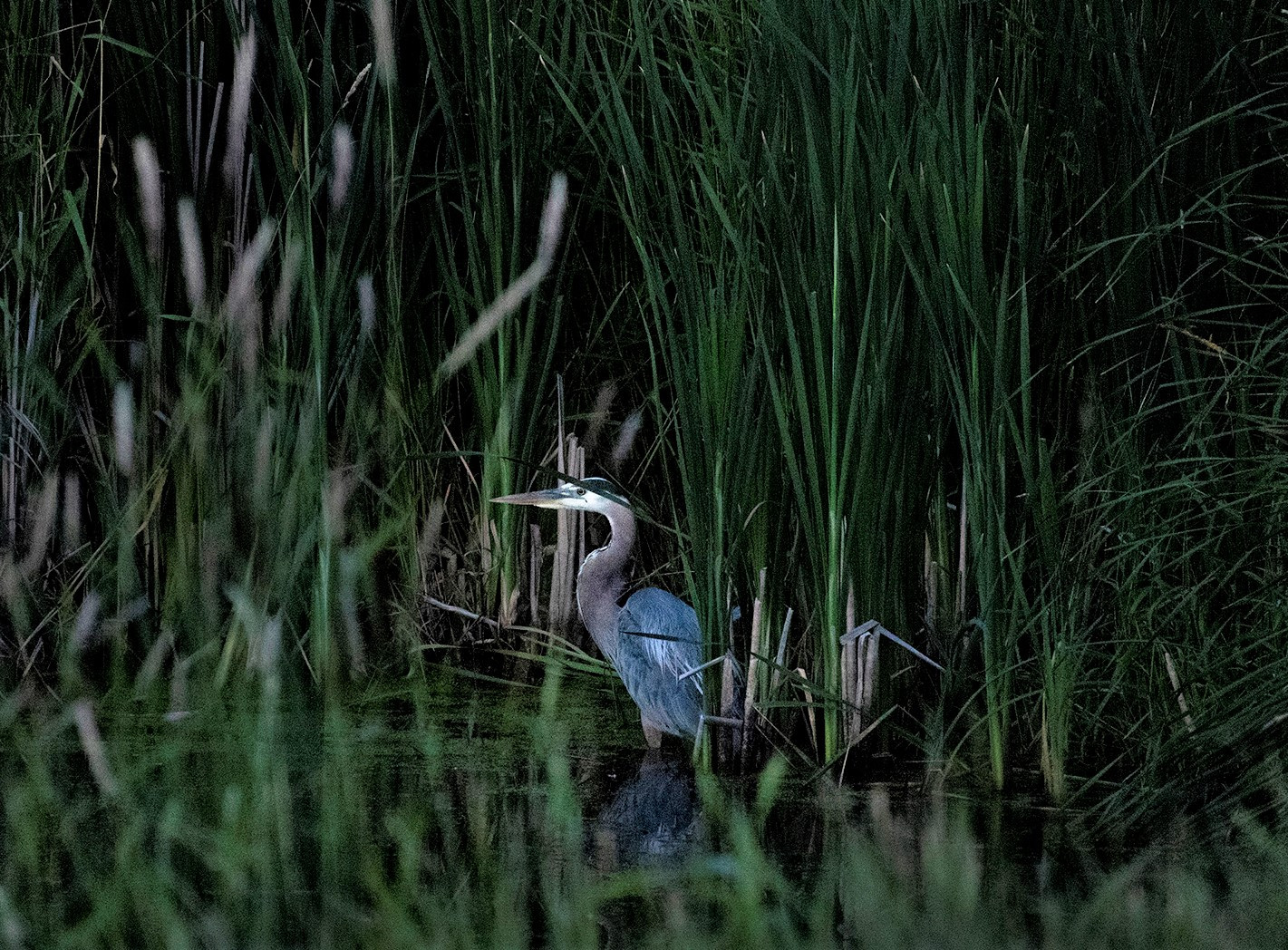
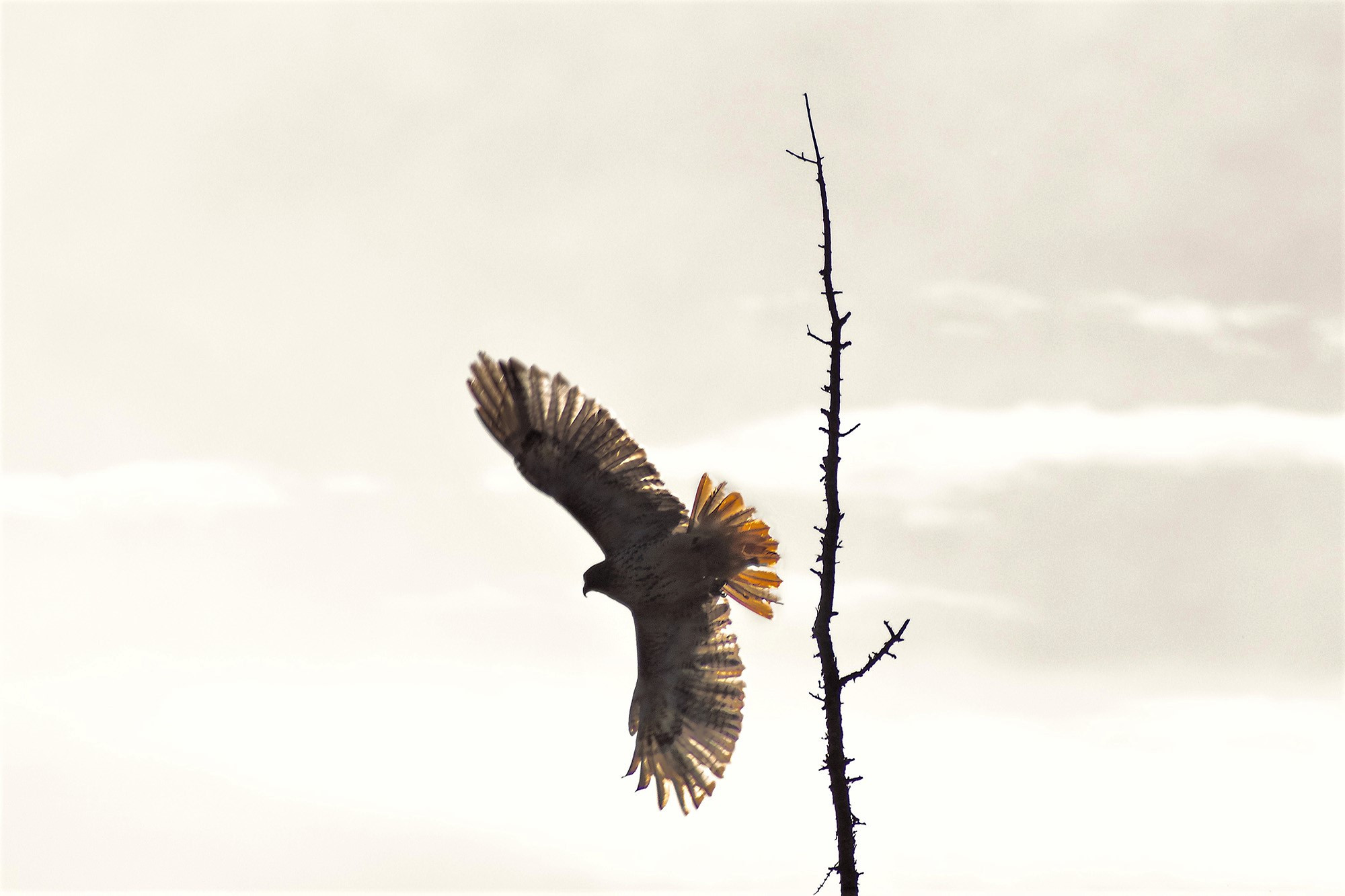
In Ontario, Red Tailed hawks (bottom image) have been dying at an alarming rate because of their natural instincts to hunt other species of birds. In the US, California condors have taken a severe hit after decades of conservation efforts finally showed positive results.
(Alexis Wright/The Pointer)
Also like humans, birds have a flu season too. Typically, waterfowl can carry the Low Pathogenicity Avian Influenza (LPAI) strains and experience little to no symptoms. According to the Centers for Disease Control, these lower-risk strains of the virus first emerged over 100 years ago, making resurgences every few seasons with varying degrees of severity, leading to the evolution of the virus into multiple strains.
Dr. Sharif, immunologist and associate dean of research and graduate studies in the Department of Pathobiology at the Ontario Veterinary College, specializes in the immune systems of chickens, including their responses to the variations of the avian influenza virus. He is concerned about the H5N1 strain mutating as it evolves among both wild and domesticated birds.
“If we have massive circulation of highly pathogenic viruses in our flocks, the chances for gaining such ability by the virus will enhance significantly,” he said. “In that case, we might run into yet another pandemic.”
Humans have become refamiliarized with global pandemics in recent years, along with the risk they pose to the existence of the species as a whole. Other zoonotic virus outbreaks have occurred within the last 20 years, such as SARS COV-1 from 2002 to 2004, ‘Swine Flu’ —a misnomer as the virus consisted of a reassortment (mixture) of Human, Swine and Avian flu viruses, MERS in 2014, Ebola Virus from 2013 to 2016, and SARS COV-2, or COVID-19, in 2019.
Since the start of the last century there have been multiple outbreaks of various strains of LPAI and HPAI. Many previous human influenza pandemics have had links to viruses originating from avian species, Dr. Sharif says; notably in 1918, 1957, 1968, 1996, and potentially now.
“This is the worst we have seen in Canada and in North America, in general,” Dr. Sharif wrote in an email to The Pointer. “We had outbreaks of H5N2 in 2014 and 2015 in Canada, but they were geographically very limited. The same virus caused massive outbreaks in the US leading to the destruction of millions of poultry, chickens and turkeys.”
“However, in terms of the number of birds affected, the current H5N1 has been the worst we have seen in the US and Canada.”
Although record keeping has dramatically improved, data show the 1918 pandemic, often incorrectly referred to as the ‘Spanish Flu’ because of sparse availability of radio communications due to military interference, was an earlier strain of the Avian Influenza virus that had been evolving over prior decades then spread around Europe through a dense population of rats among an even denser population of humans recently ravaged by war, with little to no access to basic plumbing that is taken for granted across much of the world today. The virus from this pandemic still circulates now, more commonly known as the seasonal human influenza virus, or the ‘seasonal flu’.
The virus of the 1968 pandemic was also a reassortment of an LPAI strain, H3N2, and the seasonal human influenza virus.
First identified in 1958 in domestic chickens in Scotland, the HPAI H5N1 strain deadly to chickens and waterfowl began recirculating in countries across the world resurfacing in farmed geese in 1996. One year later, the first human death occurred from the strain; there were 5 more fatalities of the 18 total cases worldwide from the same year.
Emerging again in 2020, by the next year H5N1 reportedly began recirculating amongst wild and commercial animals as the virus had spread through migratory birds into domestic mammal and waterfowl farms across the world. The worries sparked again when the virus made its way into a mink farm in Europe and not only transmitted from wild bird to mammal, but from mammal to mammal—originally suspected to be another COVID-19 outbreak.
In 2022, the Canadian Food Inspection Agency (CFIA) stated 4.7 million domestic birds became infected with H5N1 across the country, responsible for the deaths of hundreds of thousands of chickens in Ontario alone across nearly 50 Primary Control Zones (areas protected under government regulation where bird flu can cause risks to the chicken population and other wildlife)—one zone can include multiple farms.
There is an option to vaccinate chickens to reduce the chance of transmitting certain viral infections to humans, not from consumption, but from working closely with birds as poultry farmers do.
Currently, scientists maintain there is no risk in consuming factory farmed chickens or their eggs.
Scientists first became worried about the potential of H5N1, the strain currently causing widespread bird and mammal deaths across much of North America, spreading into the human population including human-to-human transmission in October.
From 2003 to 2023, there have been confirmed reports of 868 human cases of H5N1 in 21 countries with at least 450 deaths: a death rate over 50 percent in two decades, although experts say the rate of death may be over represented as humans with mild cases may not have reported their illness.
The worry common among experts today is that the HPAI H5N1 strain might mutate or evolve, either on its own or with another virus that humans (or animals more closely related to humans than birds) would be susceptible to.
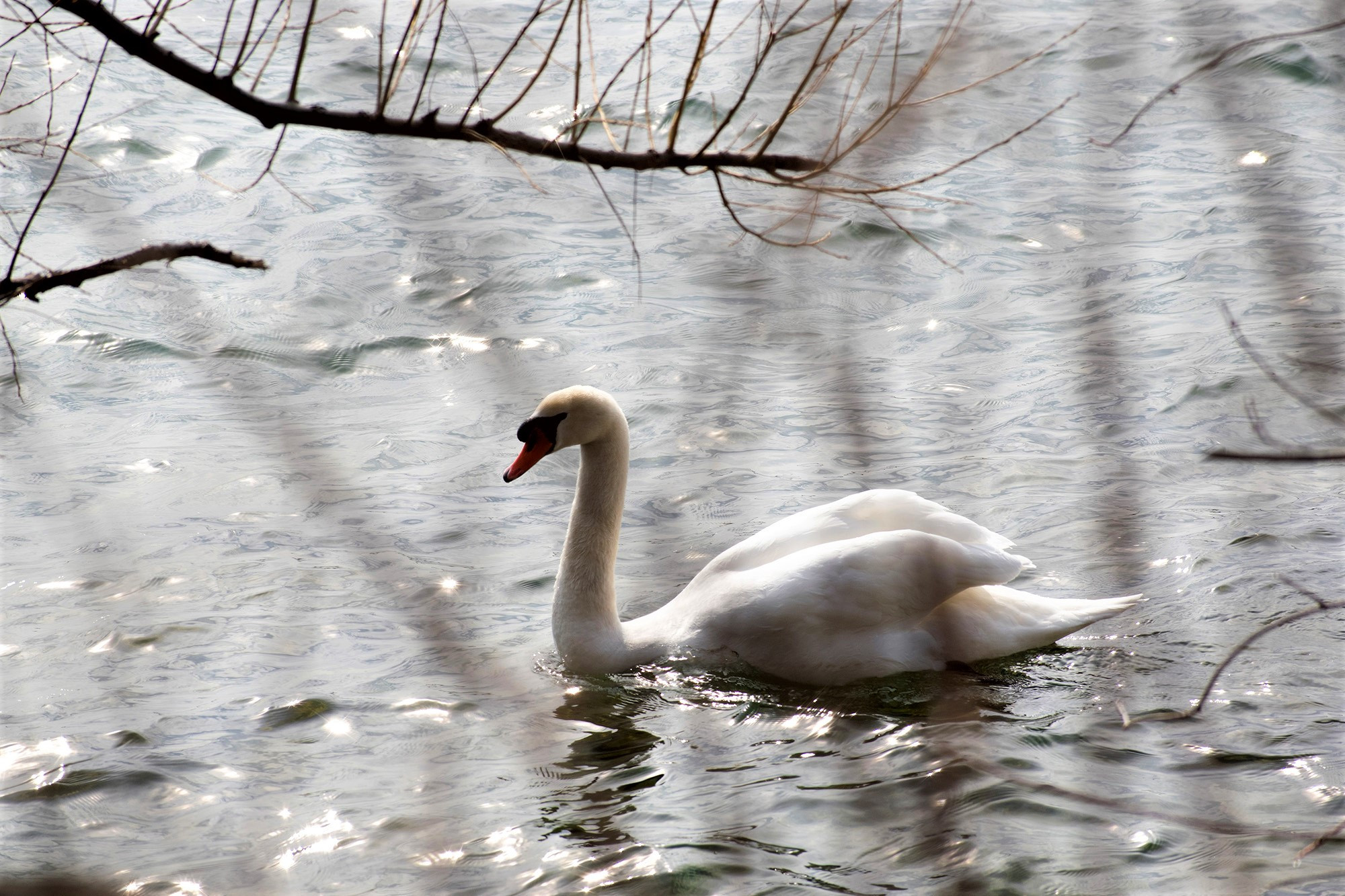
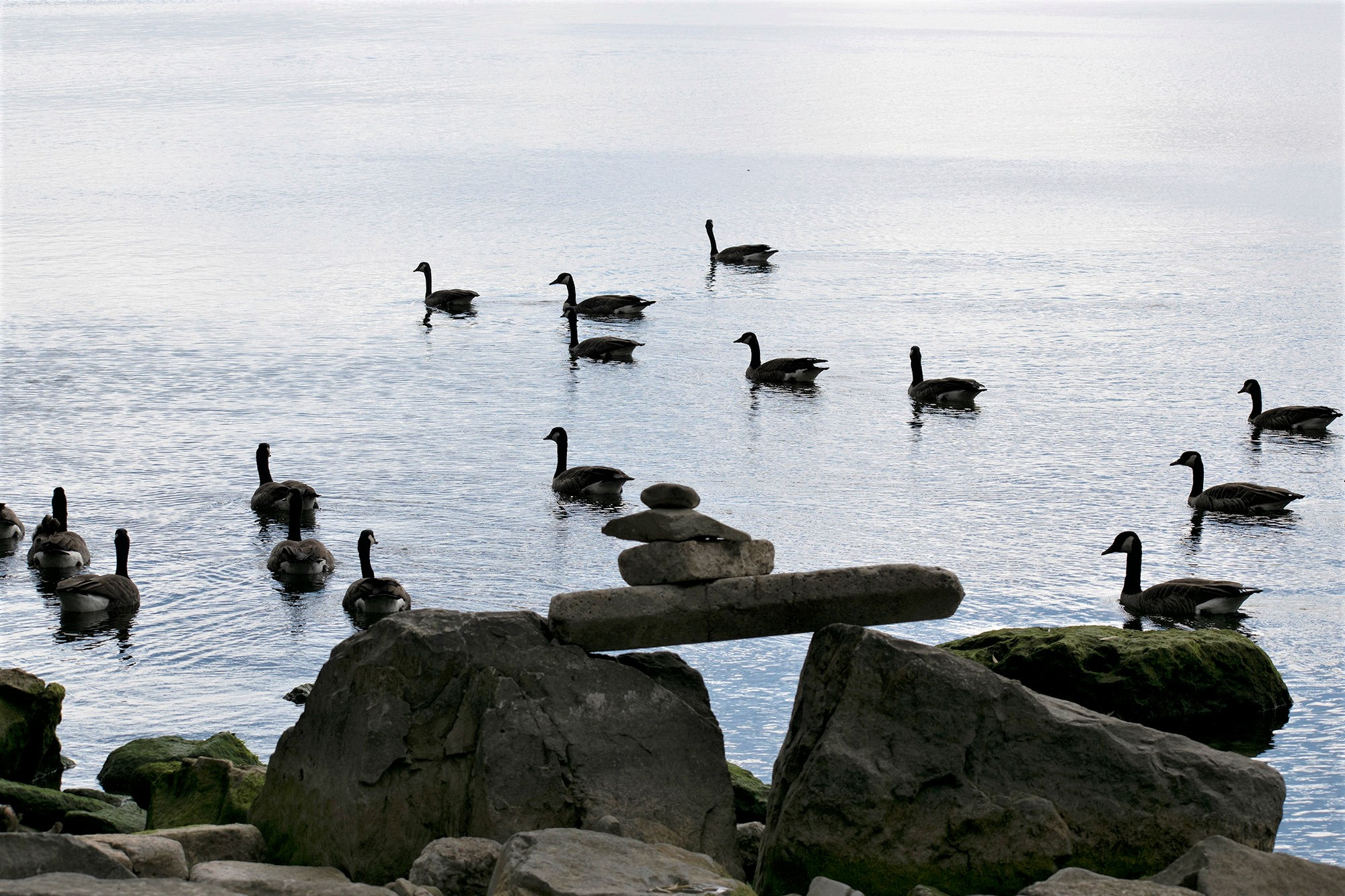
(Alexis Wright/The Pointer)
Other strains that have reportedly infected humans are both low and high pathogenic strains, but HPAI H5 and H7 remain the highest risk to both birds and people.
“Between February and May 2004, an outbreak of bird flu due to an H7N3 virus occurred among poultry in Canada. Within days, the virus causing this outbreak had changed from low to high pathogenicity. There were two human cases identified, both with very mild illness. One case was infected with a LPAI virus, and one case was infected with a HPAI H7N3 virus,” the Centers for Disease Control (CDC) states.
Dr. Sharif believes, according to research, climate change has impacted “the habitat for migratory birds and as a result caused novel viruses to emerge.”
“This is the reason the [World Health Organization] and other health or veterinary organizations are monitoring things very carefully,” he said.
In February, an 11-year-old girl and her father living next to a conservation area in Cambodia became infected with the H5N1 strain, and the girl died days later after suffering severe flu-like symptoms. It is currently suspected that both cases were direct exposure through wild birds, not human to human transmission.
According to the provincial Ministry of Health, although risk remains low for humans currently, there is still a chance of infection.
“It is possible that the current HPAI H5N1 virus could mutate resulting in sustained human-to-human transmission, so it is important to take steps to prevent human infection from occurring,” its website states. “Specific tests to detect avian influenza in people are available. Anti-viral therapy may be prescribed for you. If you do not have access to a doctor, please call Health Connect Ontario at 811.”
The World Health Organization (WHO) director general, Tedros Adhanom Ghebreyesus, said in a recent briefing that H5N1 has spread among poultry and wild birds for 25 years, but recent reports of infections in mink, otters and sea lions “need to be monitored closely” since risk to humans remains a threat as the virus continues to spread and mutate.
“In many patients infected by A(H5) or A(H7N9) avian influenza viruses, the disease has an aggressive clinical course. Common initial symptoms are high fever (greater than or equal to 38°C) and cough followed by symptoms of lower respiratory tract involvement including dyspnoea or difficulty breathing. Upper respiratory tract symptoms such as sore throat or coryza are less common. Other symptoms such as diarrhea, vomiting, abdominal pain, bleeding from the nose or gums, encephalitis, and chest pain have also been reported in the clinical course of some patients. Complications of infection include severe pneumonia, hypoxemic respiratory failure, multi-organ dysfunction, septic shock, and secondary bacterial and fungal infections. The case fatality rate for A(H5) and A(H7N9) subtype virus infections among humans is much higher than that of seasonal influenza infections,” the WHO website details.
Ornithologists are among those who are claiming this is the first time in their career that they have seen outbreaks in wild birds of this scale across the globe.
Wildlife rescues are facing significant pressure added to their plate as the risk of these viruses transmitting between species continues to escalate.
Dr. Sharif noted the peak of infections may not have arrived yet for spring 2023 as this time last year numbers continued to go up for another month.
“It is very hard to predict because if we go back to last year, there were still outbreaks happening in Ontario poultry farms into May. Therefore, it may be too early to speculate how this virus will behave in the next short while,” he wrote.
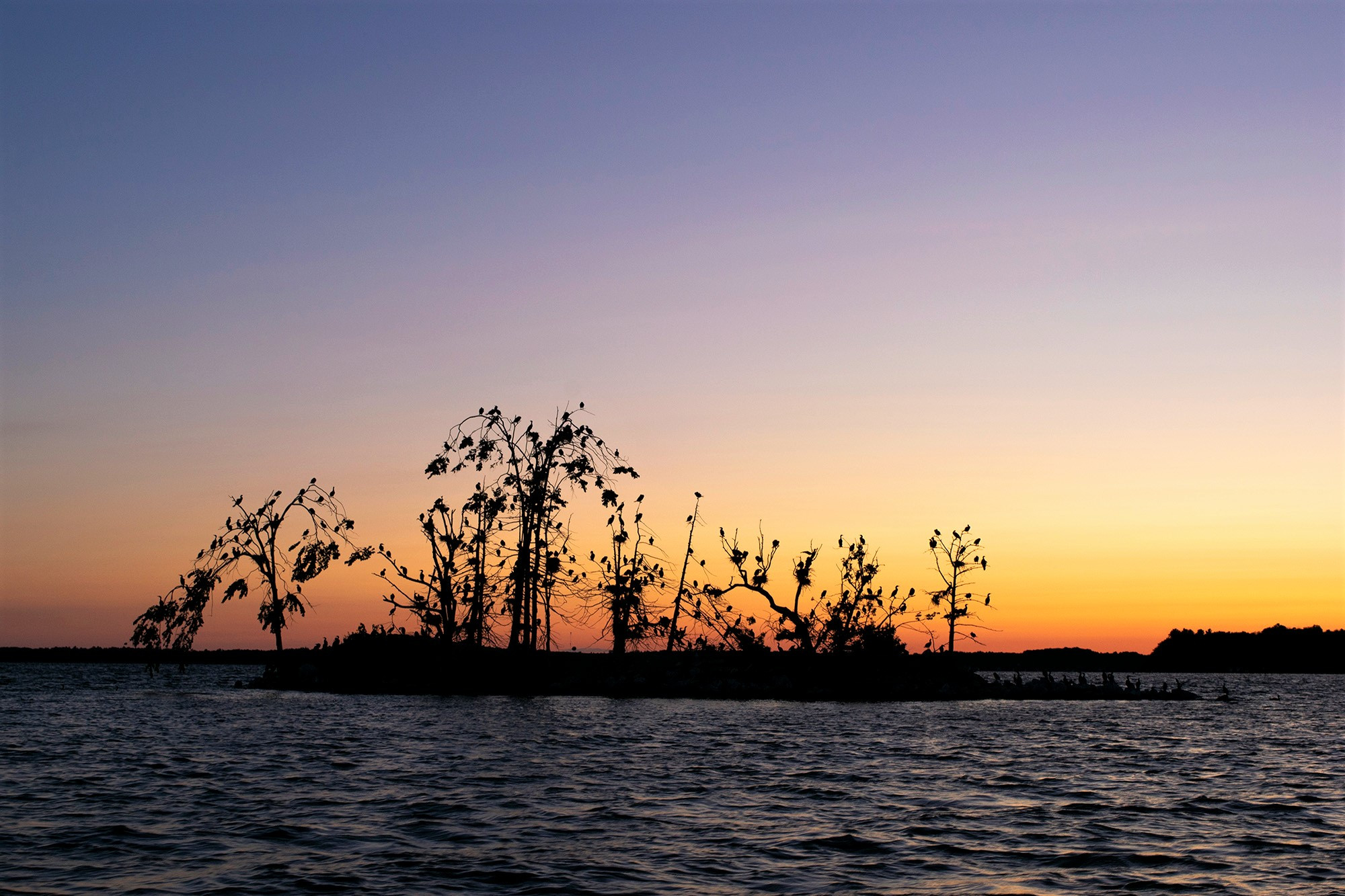
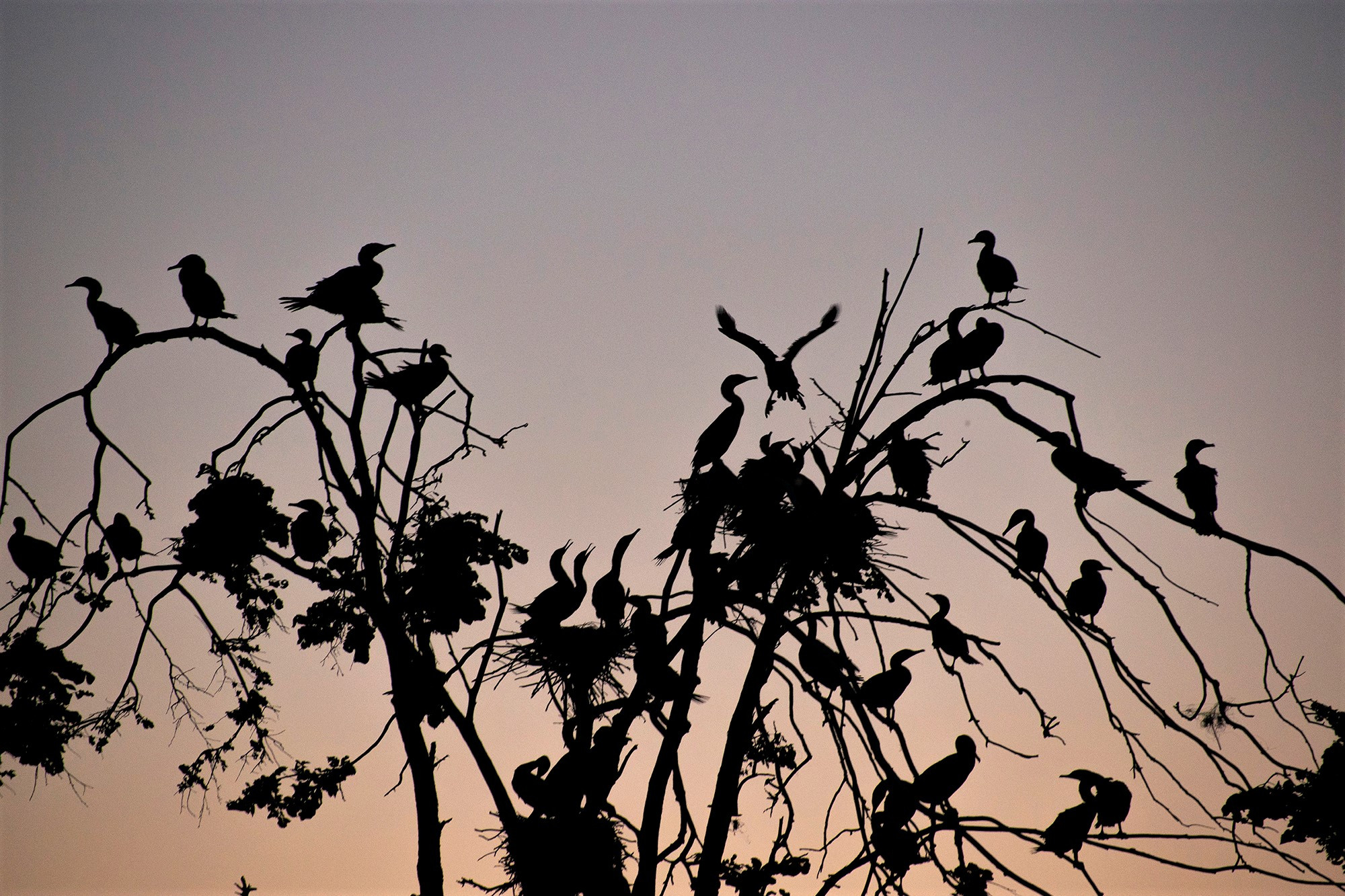
The history of the double-crested cormorant, native to Ontario, is a prime example of a species being blamed for destruction although their downfall is human caused. The birds are blamed for congregating in massive groups over small surface areas as the habitat that cormorants thrive in have been decimated in recent years, making the comeback for many bird species that experienced mass die-offs from insecticides decades ago even more difficult. These larger groups in turn face increased risk from the spread of the disease.
(Alexis Wright/The Pointer)
The virus has had many opportune environments over decades to mutate into the various strains we are seeing today, mainly due to the lifestyle of migratory species of birds and the extreme rise in demand for commercial poultry farming.
Changes in the climate, resulting in disruption to habitat and shifting migratory patterns are another concern scientists are trying to understand.
Our biological ancestors have been on Earth for millions of years, yet until about 10,000 years ago, no one ever got the measles, or even a common cold, because they did not yet exist.
Yuval Noah Harari, public intellectual and bestselling author, wrote in his 2014 book Sapiens: A Brief History of Humankind, that “Ancient foragers also suffered less from infectious diseases. Most of the infectious diseases that have plagued agricultural and industrial societies (such as smallpox, measles and tuberculosis) originated in domesticated animals and were transferred to humans only after the Agricultural Revolution.”
The only domestic relationship animals had with humans was with wolves that evolved over approximately 40,000 years to what are known today as the many dog species humans coexist with in their homes. Until people began to domesticate animals for agricultural purposes, they did not get infected with their diseases.
“Moreover, most people in agricultural and industrial societies lived in dense, unhygienic permanent settlements—ideal hotbeds for disease. Foragers roamed the land in small bands that could not sustain epidemics … The transition to agriculture began around 9500-8500 BC south-eastern Türkiye, western Iran, and the Levant. Wheat and goats were domesticated by approximately 9000 BC, horses by 4000 BC. Some animals and plants, such as camels and cashew nuts, were domesticated even later, but by 3500 BC the main wave of domestication was over,” Harari wrote.
He pointed out that throughout our earliest history, “humans fed themselves by gathering plants and hunting animals that lived and bred without intervention … All of this changed about 10,000 years ago, when Sapiens began to devote almost all of their time and effort to manipulating the lives of a few animal and plant species… Even today, with all of our advanced technologies, more than 90 percent of the calories that feed humans come from a handful of plants that our ancestors domesticated between 9500-3500 BC—wheat, rice, maize, potatoes, millet, and barley.”
Dr. Michael Greger, Research Director of nutritionfacts.org, physician, bestselling author, internationally recognized speaker, Director of Public Health and Animal Agriculture in the Animal Welfare division of the Humane Society of the United States (HSUS), wrote the book Bird Flu: A Virus of Our Own Hatching warning the public about ‘bird flu’ in 2006. “From age-old scourges such as smallpox and tuberculosis to emerging threats like AIDS and SARS, our interactions with animals have always played a pivotal role as a source of human disease,” he describes.
“Medical anthropologists have identified three major periods of disease since the beginning of human evolution. And the first started just 10,000 years ago with the domestication of animals,” he said two years later during a presentation with the HSUS in Washington DC.
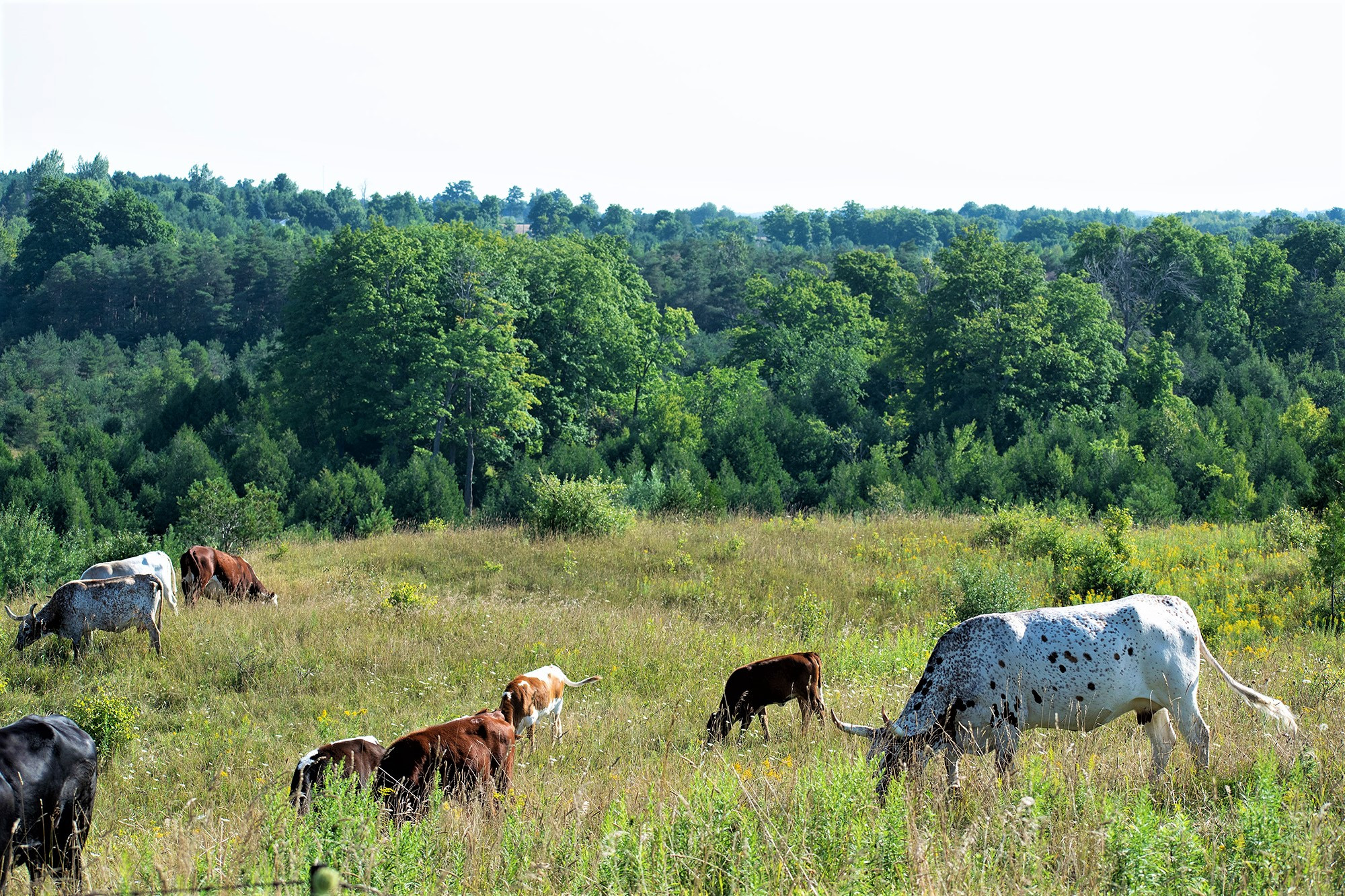
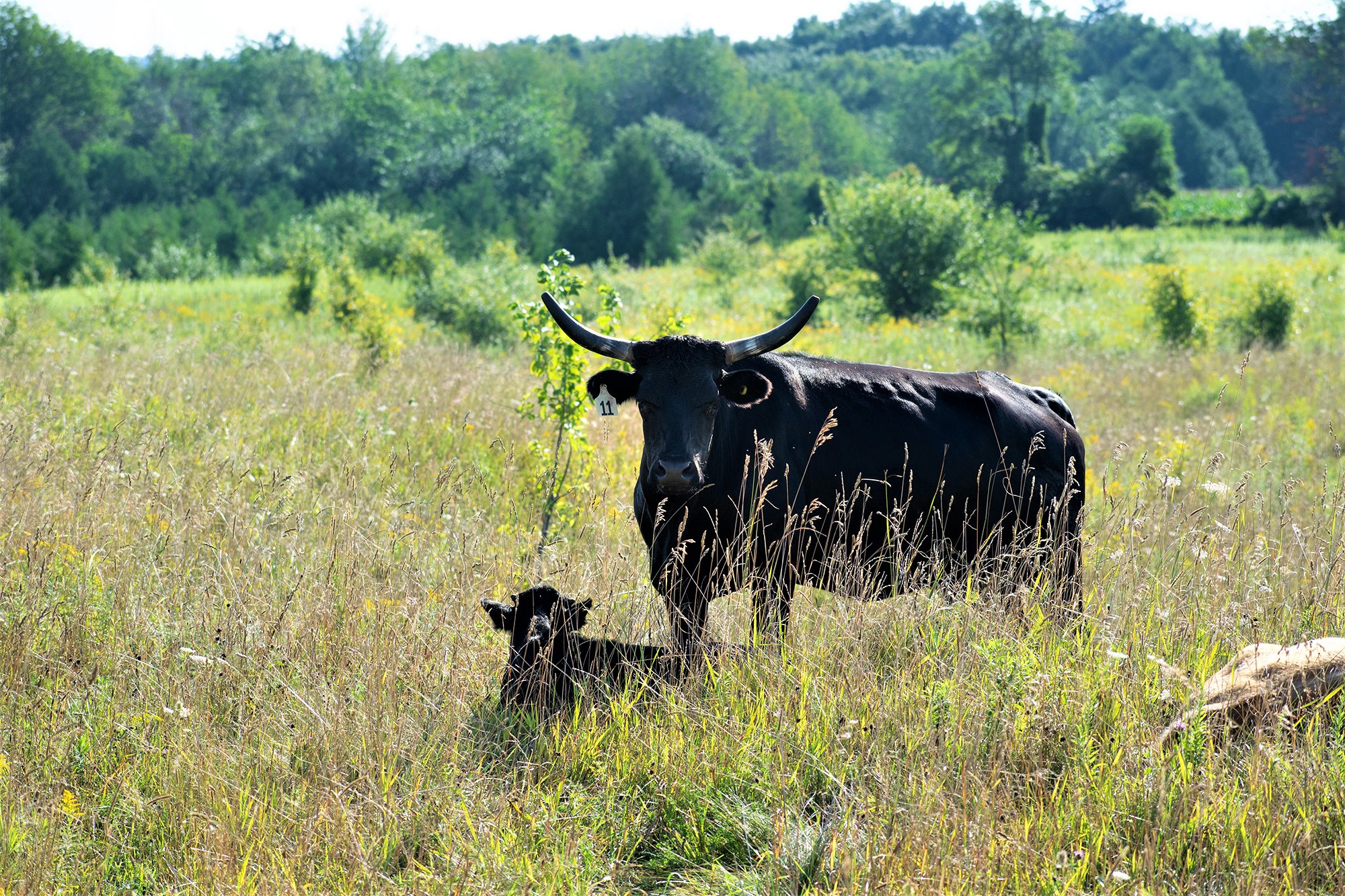
Studies have shown if the animal being raised for food lives in constant stress caused by its immediate surroundings, their bodies constantly remain filled with cortisol, the stress hormone, until their lives end. In turn, people who eat factory farmed meat consume all of the cortisol, too. This leads to serious health risks as if the person created their own hormones from experiencing stress, like: cardiovascular disease, insulin resistance, type-2 diabetes, and osteoporosis. One solution is to raise animals in ideal conditions, such as the grass-fed cows pictured above.
(Alexis Wright/The Pointer)
Dr. Greger expanded on the history of human interaction with animals.
“When we brought animals into the barnyard, they brought their diseases with them. When we domesticated cows and sheep, for example, we also domesticated their Rinderpest virus which turned into human measles, now thought of as a relatively benign disease. Over the last 150 years, measles has killed 200 million people, and in a sense, all those deaths can ultimately be traced back just a few 100 generations to the taming of the first cattle. Smallpox likely came from camelpox. We domesticated pigs and got whooping cough, we domesticated chickens and we got typhoid fever. We domesticated ducks and got influenza: before the domestication of ducks, likely no one ever got the flu. Leprosy likely came from water buffalo and the common cold from horses. How often did wild horses have the opportunity to sneeze into humanity's collective face until they were broken bridle. Until then, the common cold was presumably only common to them.”
The U.S. National Library of Medicine published a paper this month that highlights the first known case of HPAI transmission in a Harbour porpoise in Sweden that died two months prior.
“Although the genome of the detected HPAI H5N1 virus did not contain any known genetic marker of mammal adaptation, the clinical manifestations and presence of virus in diverse organs, including the brain, indicate the potential risk of HPAI viruses to mammalian hosts even without adaptation," the authors wrote. "This risk is a consideration for persons in close contact with infected animals."
Email: [email protected]
Twitter: @lextoinfinity
At a time when vital public information is needed by everyone, The Pointer has taken down our paywall on all stories relating to the pandemic and those of public interest to ensure every resident of Brampton and Mississauga has access to the facts. For those who are able, we encourage you to consider a subscription. This will help us report on important public interest issues the community needs to know about now more than ever. You can register for a 30-day free trial HERE. Thereafter, The Pointer will charge $10 a month and you can cancel any time right on the website. Thank you
Submit a correction about this story


